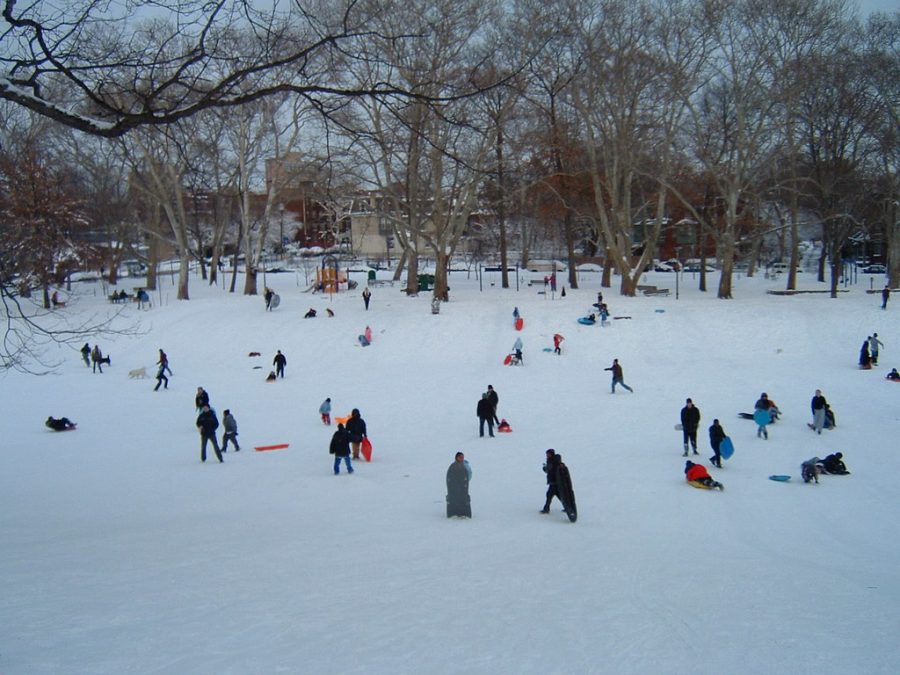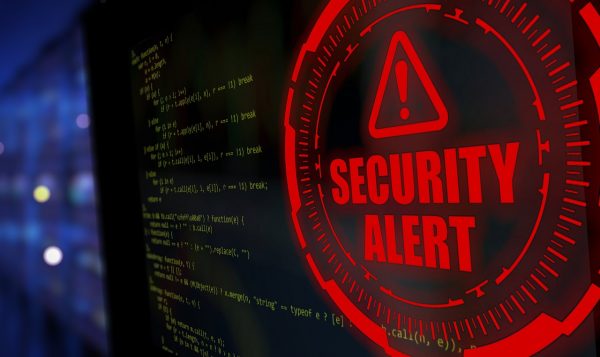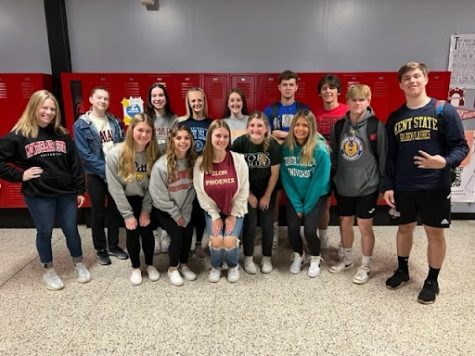Snow Days: Are Unplanned Days Off a Thing of the Past?
“Snow day at Clark Park” by ceg (CC BY-SA 2.0)
Few childhood memories are more nostalgic than having fun in the snow. Should that single day of excitement really be lost to a computer screen?
It’s not looking good. The “2-3” on your TV screen is referring to feet, not inches. Temperatures will be well below freezing today, and the next day, and the next…
Late in the evening, you hear multiple phones ring at once. Caller ID shows the name of your school in beautiful, bold letters. It only means one thing: Snow day! You happily head to bed until the morning, where you wake up to the sound of your alarm, sign on to your computer and… attend class?
For some, it’s a dystopian nightmare. For others, however, it’s already a reality. Districts throughout the country are increasingly considering, and turning to, the idea of holding virtual classes when weather conditions are too treacherous to travel to school. After virtual learning made its way into the household of nearly every family by necessity during the COVID-19 pandemic, it has been a lot easier to imagine what a virtual snow day could look like. But should the snow days that students have enjoyed for generations really be sacrificed?
The Problem with Traditional Snow Days
It’s easy to forget that a snow day doesn’t actually mean that a day of school is skipped. A certain number of school days have to be fulfilled, no matter what it takes. That means that when a snow day takes place, a school has to find somewhere later in the year to add another day of learning. Common choices are adding days to the end of the school year or taking days off of spring break.
For many schools, including Lakeland Regional High School, this problem has been solved in a simple way. A certain number of days (five in LRHS’ case) are pre-allocated in anticipation of having to close school for inclement weather. If any of these days remain unused, they’ll be removed from the end of the year, meaning that, in theory, no snow days equate to school ending a full week earlier than planned.
However, once school closes more times than the planned five days, the problem is faced once again of how to gain back that lost learning time. The sad but necessary solution is often to remove some of the days off during spring break and replace them with regular school days.

The Virtual Factor
Ever since March 2020, nearly every student, parent and family across the United States and beyond has become acquainted in some way with the idea of being educated at home through an electronic device. This new, unplanned and unknown concept of virtual learning went more smoothly for some than it did for others, but more importantly, convinced many districts that it was at least possible, even if not efficient or ideal.
Even before the pandemic, there was occasional talk of “virtual snow days.” Many were actually fond of the idea, seeing its benefits as too significant to pass up. Paradoxically, some of the same individuals who held these thoughts are now more supportive than ever of old-fashioned snow days following the tedious and tiring experience of virtual learning that is now associated almost exclusively with the pandemic. LRHS Spanish teacher Mr. Omar Perez may have said it best: “I truly believe snow days are a tradition like any other. For kids today to lose that sense of excitement that it may snow the next day and school [will] be cancelled would be unfortunate. I vividly remember growing up and having that sense of joy that is found in snow day fun.”
That doesn’t mean interest in virtual snow days is gone, however. Knowing that virtual learning can indeed be done, and with more and more school districts (such as LRHS) expanding to one-on-one computer distribution, the idea of resuming the infamous Google Meet and Zoom sessions for snow days even after the pandemic is over continues to circulate.
A Compromise
As discussed, many schools including LRHS have snow days built into their schedules. One solution is to resort to virtual learning on snow days only after the pre-allocated days have already been spent. After the school exceeds the number of days that were built into the schedule, all future inclement weather days that school year are replaced with virtual learning. This way, students, teachers and staff can still look forward to the excitement and relaxation of a snow day while also not sacrificing any days later in the year.
Problematically, even compromises don’t always work out in the end. As Ms. Brenda Ferguson, science teacher at LRHS noted, “One of the issues with virtual learning during inclement weather is that students and teachers may experience issues with power, wi-fi, etc. While I like the idea [of] not having to make up days over spring break, it is something to consider when using virtual days.” Even if a school did decide to transition to virtual learning for inclement weather days, the amount of students both able and willing to be virtually present would undoubtedly be limited.
What Works Best?
In the end, it’s easy to theorize ideas for how to deal with snow days in an era of familiarity with virtual learning. It’s much more difficult, however, to say with confidence how such ideas will actually operate in practice. As LRHS Business teacher Ms. Ornella Incardona commented, “I am a firm believer that students need to be in a classroom setting in order to learn.”
Just like with virtual learning at the beginning of the pandemic, it’s foreseeable that more and more schools will at least investigate the idea of virtual snow days. There are many logistics, details and specifics at work that make it difficult to fathom whether a virtual snow day is operationally worth it.
It also has to be remembered that, in the end, the quality of education is simply reduced when teachers and students are in a virtual setting. In the words of LRHS English teacher Mr. Eric White, “It’s impossible to garner [a] student’s attention when they’re on the other side of a screen. Attention occurs in the physical world, not in the digital. Without being physically present, one cannot demand another’s attention…sophisticated and complex topics often require sustained linear focus – the exact kind of focus that a printed page demands. Therefore, learning in a digital environment is more fragmented and less cohesive than learning bred in the physical world.”
While it’s theoretically an excellent idea to turn to virtual learning once a school’s allocated snow days have been spent, the specifics of such an operation could prove problematic. Just like with March 2020, it’s difficult to know exactly how things will go without trying them. Virtual learning was and is challenging enough, but combined with power outages, internet issues and, frankly, general student laziness, perhaps continuing to handle snow days in the old-fashioned way isn’t such a bad idea after all.

Stephan Schwab is a senior at LRHS and this is his third year writing for The Lancer Ledger. He is the Editor-in-Chief of The Ledger and President of the...












